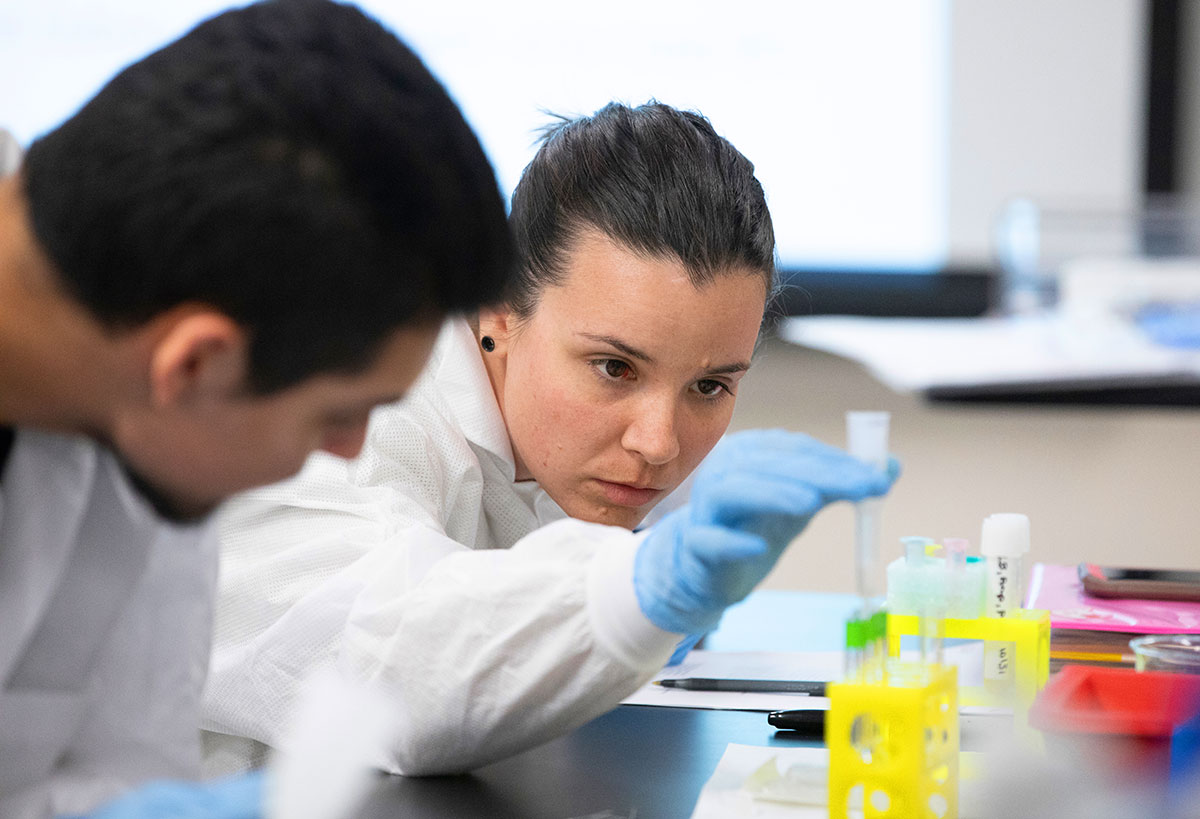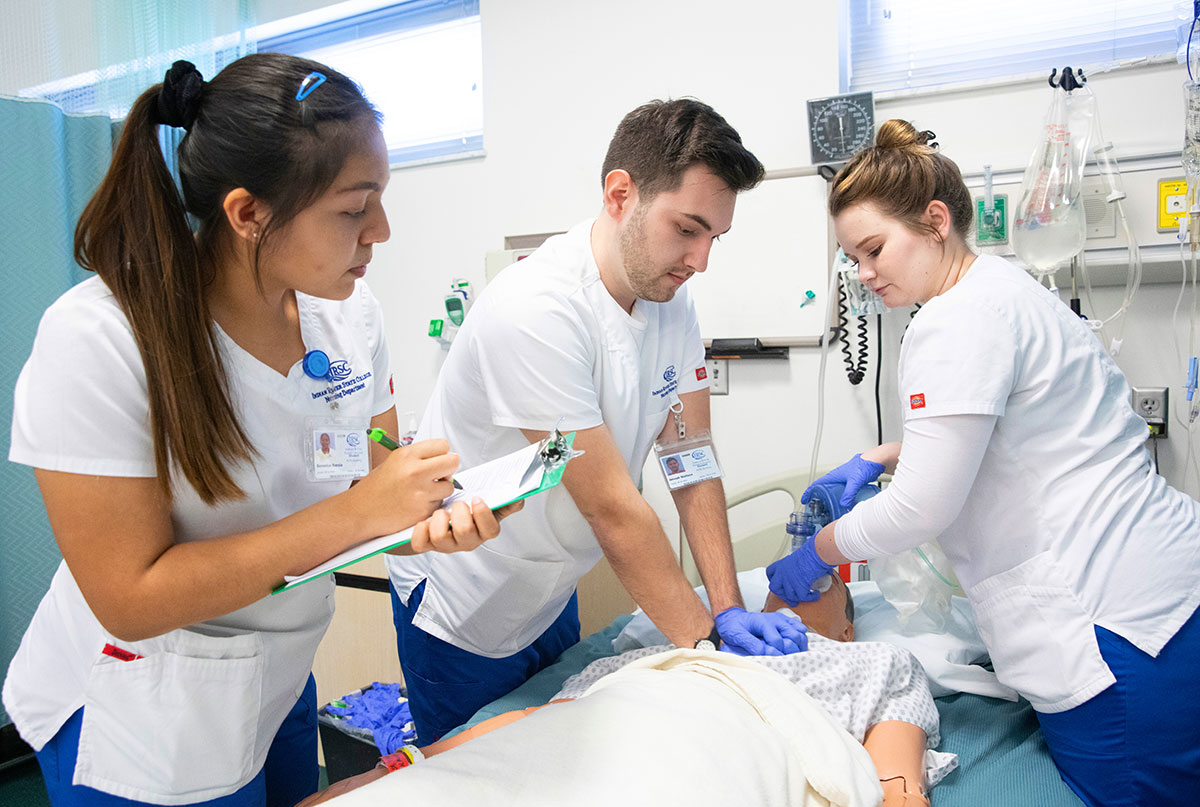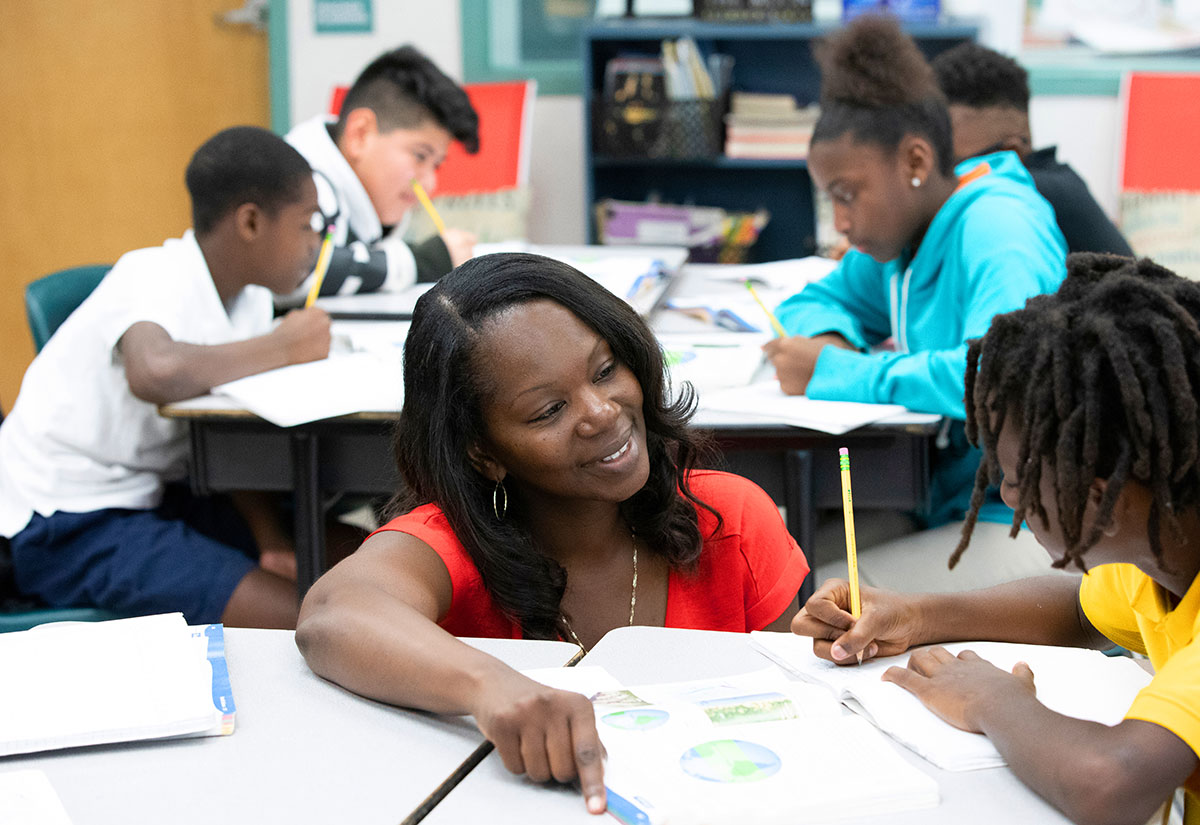Embracing the Treasure Coast’s workforce needs

From healthcare to marine technology to avionics, IRSC offers students the training and skills needed for future employment
BY ANTHONY WESTBURY
For 60 years at Indian River State College, a top priority always has been serving the community. Nowhere is that mission more apparent than in the college’s efforts to train and develop a workforce for the needs of today and tomorrow.
Business owners in St. Lucie, Martin, Indian River and Okeechobee counties petitioned the Florida Legislature to create a junior college here, with their wish being fulfilled in 1960. Before the college, there was a complete dearth of job training opportunities unless students were willing and able to travel at least 100 miles to attend college.
In 1958, St. Lucie School Superintendent Ben Bryan Sr. noted the community’s hunger for higher education much closer to home:
“I do not think that words or surveys can adequately describe the attitude of the people. It is necessary to be in the community to feel the real desire for such an institution. I feel that the communities have spoken,’’ he said.
It is worth noting that in 1958 only 38 percent of students continued their education after graduating from high school.
Since those early days, successive college administrations have responded, even anticipated, the manpower needs of the business community and provided relevant technical training. The college has expanded its efforts to train law enforcement officers, first responders, nurses, agricultural workers and manufacturing, technical employees among many others.
IRSC also has spent at least the last 30 years working closely with the K-12 school systems in four counties to offer hands-on training opportunities to high school students before they enter the workforce.
IRSC has fashioned a pipeline of professionals who support overall economic development efforts, providing along the way new options for residents to increase their prospects and quality of life.
FARMWORKER PROGRAM
Housed at IRSC, this program is one of the oldest and best-funded of its type in the country. Since its inception in 1973, FCDP, through U.S. Department of Labor grants, has helped nearly 7,000 migrant and seasonal agricultural workers and their dependents build new lives.
Program Director Dr. Daniel Bird said the $380,000 to $500,000 the program receives annually has created more than 7,000 jobs outside agriculture. Former fieldworkers and their children have instead become nurses, paralegals, welders, and one even the proud owner of his own barbershop.
Some of those children of farm workers, Bird noted with pride, have gone on to attend IRSC and to earn advanced degrees.
Lucero Carillo spent long hours in the fields with her parents picking fruits and vegetables. With the encouragement of FCDP, she transitioned from a local high school to IRSC, where she earned her associate’s degree, her bachelor’s degree and, at the age of 23, was awarded a master’s in public administration. She became a value adjustment board secretary with the St. Lucie County Clerk of Courts and hopes one day to earn her Ph.D.
She is the first in her family to graduate high school and attend college.
Victor Tapia left planting trees and inspecting groves for canker to build a new life and start his own successful business. He contacted the FCDP and became one of their most ambitious and hardworking participants, Bird said. He obtained his GED at the college and completed his vocational certificate in barbering. Since then, Victor and old friend, Jesus, founded the thriving Big Boyz Barbershop in Fort Pierce.
Tapia also is the first in his family to earn a GED and attend college. He encourages and mentors his younger clients to follow his footsteps; with hard work and a dream, he says, anything is possible.

HELPING HIGH SCHOOL STUDENTS
St. Lucie County School Superintendent Wayne Gent has worked closely with IRSC in the 2 plus 2 academic and dual enrollment programs since he was principal of Westwood High School in Fort Pierce from 1993-96. More than 1,400 students sign up for dual enrollment each semester.
“We’ve always had a very strong partnership with these programs,” Gent said.
That’s particularly true of what used to be called Tech Prep programs in high school that teach mainly manual skills in automobile maintenance and repair, carpentry and other hands-on activities. Today, those classes, which seamlessly transition from school to college are called Career Technical Education classes. Every CTE class, Gent noted, is fully articulated with matching college classes. That means student-earned technical certificates are fully accepted in the world of work.
Gent gave two examples of how vocational education in schools and college has responded to changing needs in the business world.
A high school-based marine engineering academy is slated to begin feeding the technical manpower needs of the mega-yacht industry at the Port of Fort Pierce. Also, pre-engineering classes at Treasure Coast High School mesh with college courses to help plug the gap in manufacturing training on the Treasure Coast.
Gent also spoke of the “A promise is a promise” program for education students at IRSC. Gent pledged that all program graduates are guaranteed a teaching job with the St. Lucie County school system when they successfully complete their IRSC courses.
“In the last five years there’s been a heavy emphasis on that,” Gent said. “We are growing our own.”
Gent cited one success story he’s especially proud of.
Aliesha Seitz is the director of career technical education for St. Lucie schools. A graduate of St. Lucie West Centennial High School, Seitz studied allied health at IRSC, becoming a registered respiratory therapist. She went on to teach allied health classes at IRSC for seven years before being named to her current position in the school system.
“When I was a principal and in the six years as superintendent, we’ve worked very closely with IRSC,” Gent said. “Staff there have consistently been responsive and innovative. They are always working to prepare students for the world of work. It’s been an excellent partnership.
“We also work closely with the St. Lucie County Economic Development Council and the college to see what’s on the horizon and in demand on the Treasure Coast (in terms of new technologies and employers’ manpower needs) over the next three to five years,” Gent said.
St. Lucie County Schools Chief Academic Officer Helen Wild spoke of collaboration with the college in teacher training. She noted the college offers clinical education training that allows experienced teachers to become mentors to younger educators.
The college also offers accelerated training for career-changing new teachers, Wild said, and offers classes for teacher recertification, which is required every five years.

SKY’S THE LIMIT
Simon Caldecott, president and chief executive officer of Piper Aircraft in Vero Beach, is a big advocate for Indian River State College.
“When I first came here 10 years ago, we needed more trained sheet metal and machine shop employees,’’ he said. “It’s very important for a manufacturer like us to have good access to vocational education. It’s been a real good relationship with the college. We’ve stepped up our training in recent years with their help. As a former apprentice myself, I’m a big advocate for apprenticeship programs.
“Working with Casey Lunceford, the provost of the Mueller Center in Vero Beach, we’ve put together an apprenticeship program that we first rolled out last year. Our first 10-person intake was last August and offered sheet metal training. We have another intake scheduled for this August and I’m pretty excited about it.
“It’s a two-year program. (Apprentices) get 2,000 hours a year hands-on training at the factory and spend two nights a week at IRSC in 155 hours of classroom training that teaches safety, materials information, the theory of flight and mechanical principles used in our aircraft. We worked closely with IRSC to develop those classroom training modules.
“After two years, (apprentices) become fully qualified journeymen. We pay their normal wages and the state contributes toward the academic costs. It’s open to anyone with a GED. They’re normally straight out of high school. They can learn the skills required of a sheet metal mechanic, rigging an airplane’s control surfaces, landing gear, etc.
“When doing IRSC classes they also get credit hours toward an associate’s degree. We can help them all the way up to a bachelor’s degree.
“I think we may go to electronics and avionics apprenticeship programs in the next two years. Those are also big demand areas for us.”
Caldecott mentioned another collaboration with IRSC six years ago when college graphic design and video students helped the company produce a promotional video. “They shot, edited it and put it all together. It was a very professional job,” Caldecott said.
As a result of his successful partnerships with the college, Caldecott said Piper has instituted an annual endowment that helps provide one scholarship a year.
Caldecott emphasized how important it is to Piper to have a good relationship with a local vocational college.
“The majority of our employees live in Vero Beach,” he said. “So, the convenience of having a campus there is very attractive to them.
“It’s very important having a state college that’s conveniently located, that’s progressive and stays connected with new technology. That is key to any manufacturing industry.”

FUTURE ECONOMIC DEVELOPMENT
Pete Tesch is president of the St. Lucie County Economic Development Council, a nonprofit public-private partnership whose mission is to create and retain quality employment opportunities that enhance the county’s economic prosperity.
In St. Lucie County, Tesch said, the key issue is the absence of high-wage, high-skill jobs, and a lack of economic diversity. Tesch partners with industry, local government and educators (including IRSC) to seek out the sort of jobs the county wants in manufacturing, healthcare, bio-techs and tech-based businesses.
All the traditional indexes show economic conditions are much better in 2020 than they were in 2010, Tesch said. Unemployment is at historic lows, there’s been an increase in median household income and the tax base is growing.
Working hand in hand with industry and educational leaders — at IRSC in particular — means that “workforce readiness is now the currency of economic development,” Tesch believes.
Finding people with the right skillsets for the 21st century will be vital. The EDC commissioned a Skills Gap Study in 2017 to determine what gaps needed filling. They have just unveiled the latest version of that report.
IRSC has been “a readiness beacon,” Tesch said. “Dr. (Ed) Massey has been able to anticipate and work with industries to give them the employees they need.”
Tesch cited a few examples: German-based Oculus Surgical in Port St. Lucie, which supplies equipment to ophthalmic surgeons, is about to expand its operations with a 50,000 square foot production facility in Tradition Center for Commerce. IRSC’s expertise in robotics and plant automation were very attractive to the company owners, Tesch noted.
The recently completed 411,000 square foot Tamco facility, the first new industrial business to locate to the Tradition Center for Commerce, points in the same high-tech direction. The company will be using the college’s Corporate & Community Training Institute for its employees.
The bio-sciences sector is also growing again in Port St. Lucie with the arrival of Cleveland Clinic Lerner and bio-research firm Vaxine Ltd., to the former VGTI labs in Tradition. IRSC’s record in training healthcare personnel and the bio-life sciences was one factor in these companies deciding to relocate to St. Lucie County, Tesch said.
Likewise, the decision of Direcktor Shipyards to open a mega-yacht repair and refit facility at the Port of Fort Pierce was influenced in part by IRSC’s training track record. The college is working on a customized Yacht Service Technician qualification to help provide the mechanics, machinists and pipefitters that will be needed in coming years.
“I foresee even more collaboration with the college, the EDC and the (St. Lucie County) Manufacturers Association in the future,” Tesch predicted. “Manufacturing is robust and thriving on the Treasure Coast. Workforce readiness and timing is a crucial element and the college will play an even bigger role in that in the future.”

TALENT AND LABOR
Ted Astolfi is the president and chief executive officer of the Economic Council of Martin County. He echoed many of the points made by Tesch. The council advocates for economic growth and its mission is to ensure that Martin remains a sustainable, quality community.
“Talent and labor are the No. 1 issues. We’re concerned that the K-12 system is feeding into higher education and that IRSC continues to offer the degrees and certification our members need.” Astolfi works closely with the IRSC president’s office and the provost of the Chastain Center in Stuart toward those goals, he said.
The biggest growth in Martin County workforce in recent years has been in the healthcare sector. IRSC has responded in full force by providing nursing and other technical training, Astolif noted. Those needs will only accelerate in future with the arrival of the Cleveland Clinic, he believes.
The challenge now, Astolfi said, will be to maintain the level of excellence, while also meeting the needs of the four-county area.
After working closely with outgoing IRSC President Ed Massey, Astolfi credits much of Martin’s workforce success to him.
“He’s willing to listen to the community, to staff and students and the economic community. He understands all those needs and works to synthesize programs that lead to success.”
Helene Caseltine is economic development director for the Indian River County Chamber of Commerce.
College staff have always been “tremendously helpful” in workforce development, Caseltine said. “Anytime we have a prospective company coming into town, whether they will need new training or not, we always bring a representative of IRSC along. They’ve been very keen on working with local businesses — either new ones or sprucing up existing ones. They are very good at designing training programs in weeks rather than months.”
Indian River County shares many of the same economic development goals as its peers in other Treasure Coast counties. The emphasis is on high-paying, high-skill jobs in aviation, marine industries. The arrival of the Cleveland Clinic bodes well for medical jobs in the future, she said.
“I believe they will be ramping up in the future and helping attract more of one of our targeted industries, specialty healthcare (which includes plastic surgery, sports medicine and others).”
After 60 years, Indian River State College educators and administrators can proudly point to their continuing commitment to building a stronger and more sustainable community for the entire Treasure Coast. The college has built robust partnerships with all the stakeholders in the economic development and workforce readiness process.
As then-IRCC President Herman Heise said almost 40 years ago, the college has to be sensitive to the needs of the community and remain flexible enough to meet those needs. Indian River State College shows no sign of letting up on that vital mission.
